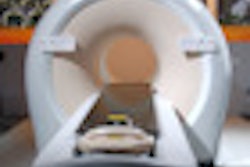Women with breast cancer who choose surgical removal of the contralateral healthy breast are more likely to be younger, premenopausal, and diagnosed with ductal carcinoma in situ (DCIS), according to a study presented last week at the RSNA 2012 meeting. They are also more likely to have greater breast density and a family history of breast cancer.
The study stemmed from a decade-long debate about a possible association between concurrent increases in the use of MRI to evaluate newly diagnosed breast cancer and the number of women choosing surgical removal of a healthy breast, also known as contralateral prophylactic mastectomy (CPM). There was an 11-fold increase in this type of mastectomy from 1998 to 2007, and the current rate is 5%.
The study aimed to identify which patient and MR factors are associated with patients' decisions to undergo CPM. The results were presented last week by Dr. Habib Rahbar, acting assistant professor in the department of radiology at the University of Washington.
Rahbar and colleagues measured patient and lesion pathology variables in addition to the results of breast MRI in 934 women enrolled in the American College of Radiology Imaging Network (ACRIN) 6667 trial. All patients in that study had newly diagnosed breast cancer and an MRI scan of the opposite breast prior to surgery.
Compared with participants who did not opt for CPM, the 86 women (9%) who underwent mastectomy were more likely to be younger, premenopausal, diagnosed with DCIS, have greater breast density, and have a family history of breast cancer, the researchers found.
There was no association between more frequent mastectomy and MRI results that were considered positive because they showed possible abnormalities or warranted further follow-up.


.fFmgij6Hin.png?auto=compress%2Cformat&fit=crop&h=100&q=70&w=100)





.fFmgij6Hin.png?auto=compress%2Cformat&fit=crop&h=167&q=70&w=250)











